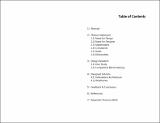Please use this identifier to cite or link to this item:
http://drsr.daiict.ac.in//handle/123456789/467| Title: | PlacesDA: campus social app for DA-IICT students to explore places |
| Authors: | Raje, Nitin Ganguli, Avik |
| Keywords: | Online social Networks Web Sites Design User Interfaces Computer systems |
| Issue Date: | 2013 |
| Publisher: | Dhirubhai Ambani Institute of Information and Communication Technology |
| Citation: | Ganguli, Avik (2013). PlacesDA : campus social app for DA-IICT students to explore places. Dhirubhai Ambani Institute of Information and Communication Technology, 57 p. (Acc.No: T00430) |
| Abstract: | Against the backdrop of ubiquity of computers and computer networks in our lives today, especially on academic campuses, the objective of this project is to explore and imagine multimedia interfaces and interactions between students and the campus - the enhance and augment the social networks of place-exploration, place-sharing and place-ownership. The motivation for this project is derived from the fascination with the idea of a campus where place come alive with intelligent, ubiquitous, contextual interactions, on the go - and outside the campus as well. Places develop importance and meaning from use by people as individuals and as community. In a campus scenario, the community accepts new members at lest once every year, and at least once every year, new members must learn all about the traditions / legacies of the community, And this information is not static - rather created and re-created / rediscovered. Over time, as a campus community develops places, the phenomena of footprint and territory take form - for example when a student goes on an internship or when an alumni joins the workplace, or when a lot of students start visiting a particular ice cream parlour; as a result, places start accumulating heritage value for newcomers to learn about as also feelings of ownership develop among the student community as a whole. However, the challenge is to first develop a framework of interaction that faithfully resolves all the pressing place-related information needs facing the freshman students, experienced senior student planning a trip, or even an alumni looking to catch up on trends or sharing an experience. The design process began by identifying the audience, identifying their goals - information needs, conceptualizing a self-sustaind network of information exchange within the audience community, archetyping the audience and selecting interview candidates, conducting interviews - gaining more insights, weighing goals, understanding tasks and identifying gaps in available media. Further a competitive benchmarking was done against priority goals benchmarks and intervention features were identified,a detailed product strategy was conceptualised, its information architecture outlined. Finally, some of the high priority screens were wireframed and demonstrated to a few selected members of the audience community, their feedback and suggestions duly noted. |
| URI: | http://drsr.daiict.ac.in/handle/123456789/467 |
| Appears in Collections: | M Des Project Reports |
Files in This Item:
| File | Description | Size | Format | |
|---|---|---|---|---|
| 201114003.pdf Restricted Access | 5.61 MB | Adobe PDF |  View/Open Request a copy |
Items in DSpace are protected by copyright, with all rights reserved, unless otherwise indicated.
